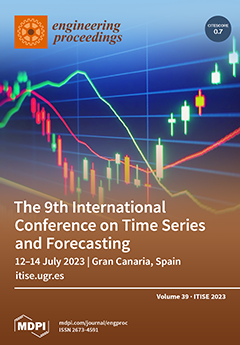Eng. Proc., 2023, ITISE 2023
The 9th International Conference on Time Series and Forecasting
Gran Canaria, Spain | 12–14 July 2023
Volume Editors:
Ignacio Rojas, University of Granada, Spain
Hector Pomares, University of Granada, Spain
Luis Javier Herrera, University of Granada, Spain
Fernando Rojas, University of Granada, Spain
Olga Valenzuela, University of Granada, Spain
Printed Edition Available!
- Issues are regarded as officially published after their release is announced to the table of contents alert mailing list.
- You may sign up for e-mail alerts to receive table of contents of newly released issues.
- PDF is the official format for papers published in both, html and pdf forms. To view the papers in pdf format, click on the "PDF Full-text" link, and use the free Adobe Reader to open them.




